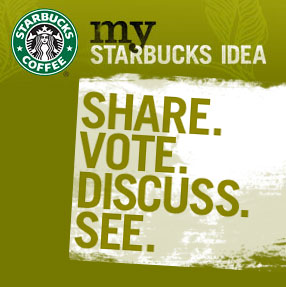If one of your employees posted a dodgy comment on social media, or a customer tweeted a false claim against your business, How you gonna deal with this problem?
Recently, social media such as facebook, twitter, blog and others is not only the way people communicate with each other, but changing the way people work as well.
However, organization can have tremendous benefits and risks at the same time.
This week, I will look into an
organization that could face a legal risk due to participation in the social
media
STARBUCKS’
TWITTER CAMPAIGN GOES HORRIBLY WRONG!
A Starbucks Story :
The
company launched a hashtag campaign on Twitter #SpreadTheCheer which was used
more for bashing the brand then spreading the holiday hip-hooray. And the more embarrassing
part is that a big LED screen placed in one of their shops was showing the
tweets. (19,
Dec. 2013 by Srdjan Toljagic)
So, a tweet like “Tax dodging MoFo’s”
appears on a giant led screen while you are drinking your coffee. Starbucks had
only paid $13.8million in taxes despite $4.9 billion sales in Britain.
"A Starbucks spokesperson said: “We
apologies to any visitors who may have been offended by inappropriate messages
displayed on the Twitter wall screen at the Natural History Museum’s ice rink
face on Sunday. This was due to a temporary malfunction with the content
filtering system.”
How
can the organization deal with the legal risks?
I found really nice and clear resource
which is about top 5 risks and solutions to deal with the legal risks.
1. Reputation
management: Social media may cause a risk to a company’s reputation
by creating negative publicity. Legal issues may perhaps arise if a company
gives an inappropriate comment about another company on a social media platform
for instance.
·
Solution: Create an approval process involving a
senior leader for any social media communication. Do not give a junior
person full control as their inexperience could cause irreparable damage.
2. Security Issues: There is always a risk of hacking, spy-ware
and bugs amongst others. This means that there is a risk of having confidential
company information leaked outside the company.
·
Solution: Work with your IT department or hire a
professional to ensure proper privacy and security settings are in place.
This is critical to protect confidential information, to avoid having your
account hacked, or falling victim to cyber theft. Higher profile
companies will need more sophisticated security systems.
3. Engaging in
two-way dialogue and potential criticism: While social media allows a company to
interact directly with customers in real time, it also gives those same
customers a public platform to voice dissatisfaction.
·
Solution: Carefully monitor the social media
platforms you operate on so you can quickly identify negative feedback and
address it before it gains support.
4. Trust as part of the culture: In order for employees to use social
media in a successful way for the company, trust is a prerequisite. Not having
that trust as part of the organizational culture can present a risk when it
comes to social media.
·
Solution: Create an extensive training program for
the entire organization highlighting the do’s and don’ts. While everybody in
the company needs to understand the mission, only allow a trusted few to
actually pull the trigger.
5. Wasting
company time: Social media can be addictive and there is a risk that
employees will spend too much time on it, compromising their work and thus the
organization’s business operations.
·
Solution: Many companies monitor what website
employees visit and how much time they spend on them. If an employee
seems to be spending an unnecessary amount of time on social media sites, have
human resources discuss it with them.
Reference:
The really important factor of using
social media within the organization and also external parties is Legal risks. First,
organization can easily manage the internal risks through the accurate usage
policy which outlines what employees can and cannot do in regards to the usage
of the social media at work place. Second, organization need to accept the customers’
feedback and provide nice & clear service in order to deal with the
external parties.
There are two sides of social media
and it could bring both pros and cons to the organization. So, they should know
how to use it properly to get the best results.



![10 Examples of ROI in Social Media [Infographic]](http://www.mdgadvertising.com/blog/wp-content/uploads/2013/07/roi_in_social_media_475.jpg)

















